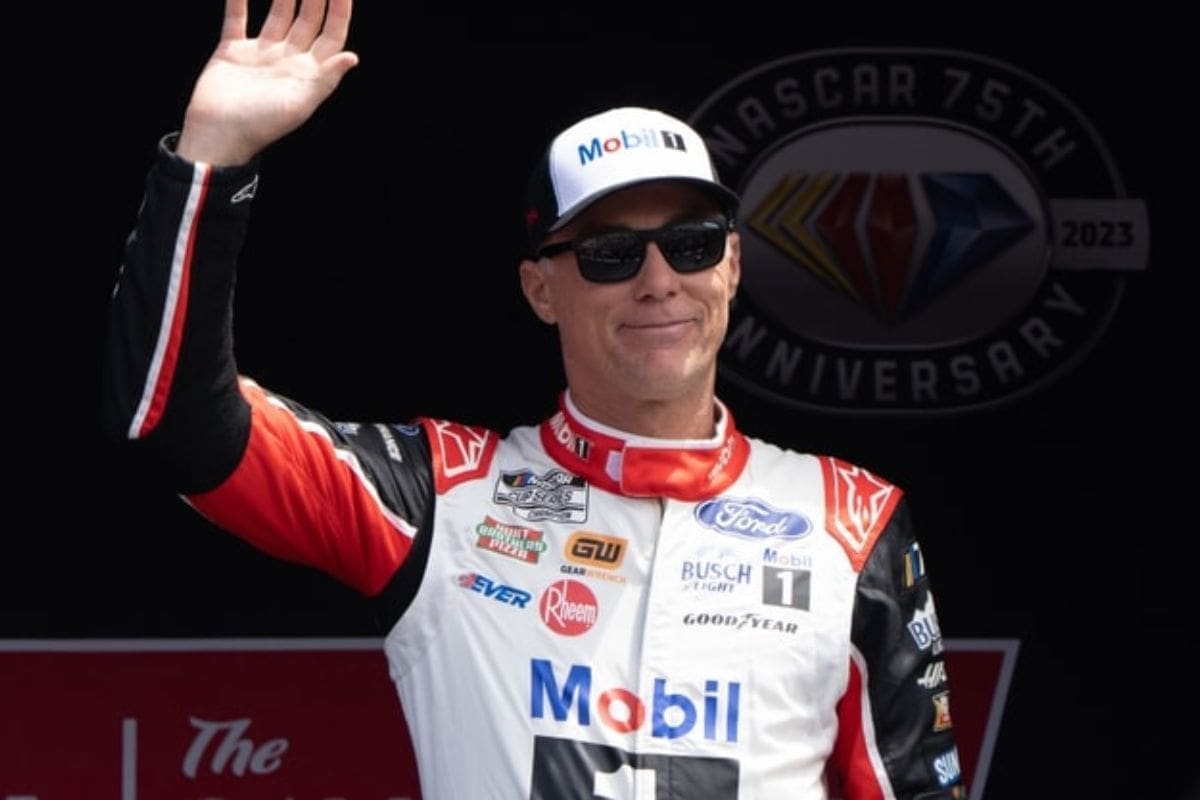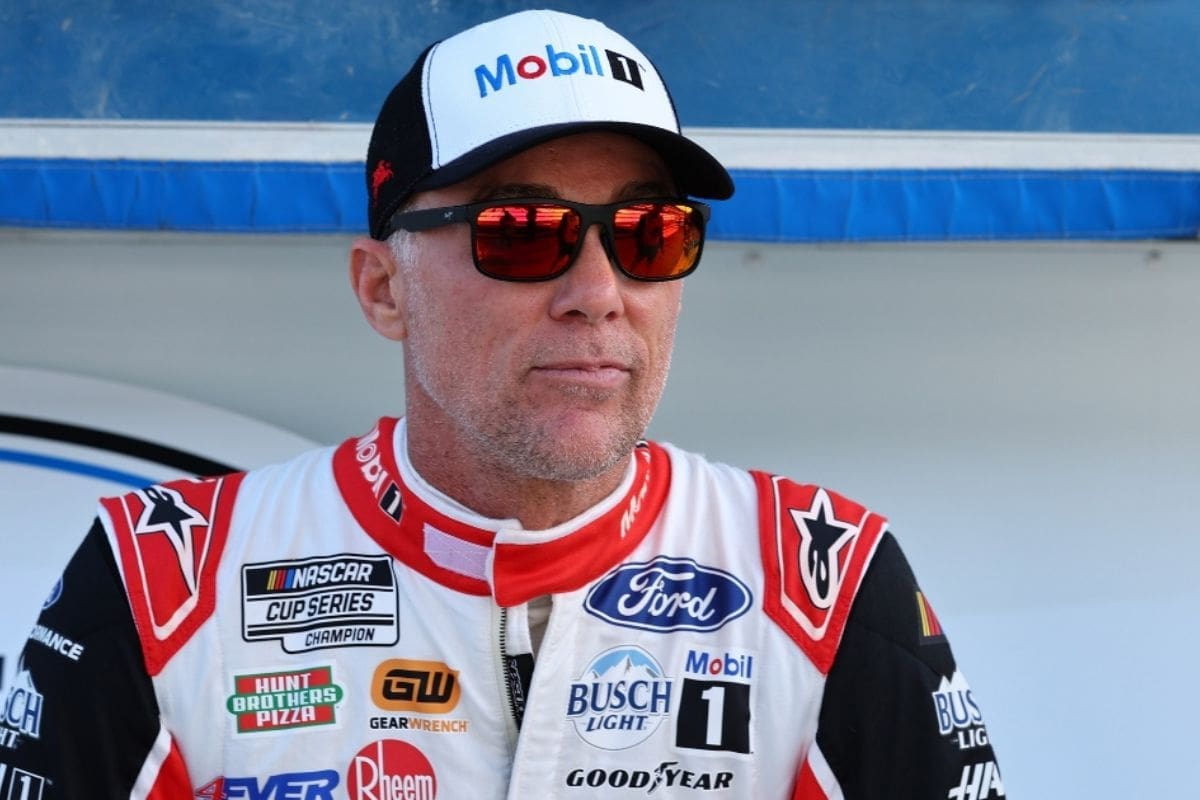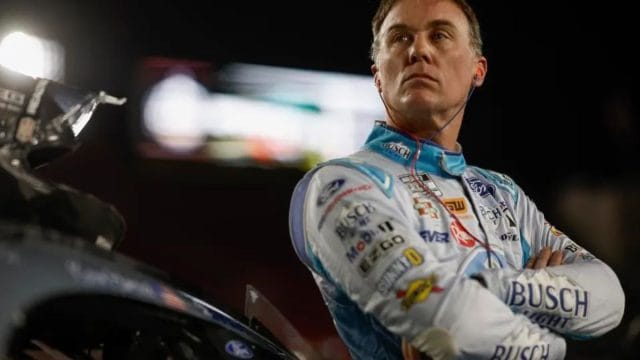Kevin Harvick Surprising Role at FOX Sports: Kevin Harvick’s transition from the racetrack to the broadcast booth at FOX Sports has ignited a wave of admiration and curiosity among NASCAR enthusiasts. His insightful commentary and unique perspective as a former driver have added a new dimension to the coverage, leaving fans intrigued by the depth of his analysis and the unexpected insights he brings to the table.
As Harvick continues to redefine the role of drivers in the media landscape, the implications for the sport and its followers are both intriguing and promising.
Key Takeaways
- Harvick’s insightful commentary reshapes NASCAR coverage with unprecedented depth.
- Fans captivated by his unexpected expertise and unique perspective.
- Former drivers like Harvick redefine broadcasting roles, adding value and credibility.
- Industry benefits from Harvick’s transition, elevating media coverage and fan engagement.
Kevin Harvick’s Return to NASCAR After Retirement
After Kevin Harvick’s retirement from NASCAR, his unexpected return to the sport has sparked both curiosity and admiration among fans and analysts alike. Fan reactions to his comeback have been overwhelmingly positive, with many expressing excitement at the prospect of witnessing his racing expertise once again.
Harvick’s broadcasting skills have also come to the forefront, as he seamlessly transitioned into a role as an analyst for FOX Sports, showcasing a deep understanding of the sport and providing insightful commentary.
His industry insights, gained from years of experience as a successful driver, have further enhanced his credibility in this new role. The media presence he commands brings a unique perspective to NASCAR broadcasting, attracting a wider audience and adding depth to the coverage.
Harvick’s return signifies a trend of former drivers making significant contributions to the sport beyond their racing days, highlighting the value they bring to the industry.

Benefits of Former Drivers in NASCAR Broadcasting
Kevin Harvick’s return to NASCAR not only reignited his racing career but also highlighted the significant benefits that former drivers bring to NASCAR broadcasting through their firsthand experience and insights. Former drivers offer a unique driver perspective that adds depth to race analysis and commentary. Their insider knowledge of the sport’s intricacies gives viewers a behind-the-scenes look at what unfolds on the track, enhancing the overall broadcasting dynamics. This insider perspective not only educates but also engages fans, drawing them closer to the sport they love. Furthermore, the on-air chemistry between former drivers and the broadcasting team creates a seamless viewing experience, making the coverage more enjoyable and informative for the audience.
| Benefits of Former Drivers in NASCAR Broadcasting | |
|---|---|
| 1. Driver Perspective | 4. Insider Knowledge |
| 2. Broadcasting Dynamics | 5. On-Air Chemistry |
| 3. Fan Engagement |
Pam Miller’s Insights on Driver Contributions
Pam Miller’s perspective sheds light on the invaluable contributions drivers make in enhancing media coverage of NASCAR, particularly in fostering innovative approaches and technological understanding within the sport.
Driver expertise plays a pivotal role in educating media personnel about unfamiliar technologies, enabling them to provide more in-depth coverage. Through their firsthand experience on the track, drivers bring a unique perspective that enhances media education and leads to the development of innovative approaches in broadcasting.
These collaborative efforts between drivers and media professionals not only elevate the quality of coverage but also contribute significantly to fan engagement and the overall viewing experience. By incorporating drivers’ insights and expertise, media outlets can offer fans a more immersive and informative viewing experience, enriching their understanding of the sport and building a deeper connection with the drivers themselves.
Pam Miller’s recognition of drivers’ contributions underscores the importance of their involvement in shaping the future of NASCAR media coverage.
Collaborative Learning Between Drivers and Media Outlets
In the realm of NASCAR media coverage, the collaborative learning process between drivers and media outlets serves as a dynamic force driving innovation and evolution in broadcasting practices. This exchange of knowledge and insights facilitates mutual growth, benefitting both parties and the industry as a whole.
As drivers transition into media roles post-retirement, they bring invaluable industry insights and firsthand experience to media outlets, enriching the content and analysis provided to viewers. The collaborative success between drivers and media outlets is evident in the seamless integration of on-track expertise with broadcasting professionalism, creating a more comprehensive and engaging viewer experience.
In this era where content quality is paramount, the symbiotic relationship between drivers and media outlets ensures a two-way learning curve that propels the industry forward. Embracing career transitions and fostering collaborative learning not only enhances the credibility and authenticity of media coverage but also paves the way for future prospects in NASCAR broadcasting.
Two-Way Learning Curve and Future Prospects
The symbiotic relationship between retired drivers and media outlets in NASCAR broadcasting cultivates a dynamic two-way learning curve that propels the industry forward and opens up promising future prospects. This exchange of expertise enhances media dynamics, with retired drivers bringing insider knowledge from their on-track experience, while media outlets offer platforms for this insight to shine. The broadcast synergy created by this collaboration not only enriches the viewer experience but also elevates the overall quality of NASCAR coverage.
As Kevin Harvick immerses himself in his role at FOX Sports, the skill exchange between seasoned drivers and media professionals becomes evident. Harvick’s transition into the media realm not only benefits from his racing background but also offers industry insights that contribute to a more comprehensive understanding of the sport. This two-way learning process not only enriches the content delivered to fans but also sets a precedent for future collaborations, promising a bright future for NASCAR broadcasting.

Conclusion
Kevin Harvick’s unexpected transition to a role at Fox Sports has brought a new perspective to NASCAR broadcasting. The benefits of having former drivers in media outlets have been evident, with insights from individuals like Pam Miller highlighting the valuable contributions they bring to the sport.
The collaborative learning between drivers and media outlets has created a two-way learning curve that holds promising prospects for the future of NASCAR broadcasting.
Our Reader’s Queries
Q: Does Kevin Harvick own a NASCAR team?
A: Kevin Harvick is the owner of Kevin Harvick Incorporated, a race team that competed in the Xfinity Series from 2004 to 2011 and the Truck Series from 2001 to 2011. The team’s No. 29 late model is currently driven full-time in the CARS Tour by Brent Crews, along with the No. (additional information not provided).
Q: Does Kevin Harvick have a wife?
A: DeLana and Kevin Harvick got married on February 28, 2001, in Las Vegas, Nevada, shortly after Kevin made his Cup debut in NASCAR. Unlike many NASCAR wives, DeLana is known for being actively involved in races and can often be seen on top of the pit box wearing a custom-made fire suit.
Q: What is NASCAR owned by?
A: The privately owned company was founded by Bill France Sr. in 1948, and his son, Jim France, has been the CEO since August 2018. The company is headquartered in Daytona Beach, Florida.
Also Read: Kevin Harvick Exposes Why Teams Keep Drivers in the Dark About Innovations!
